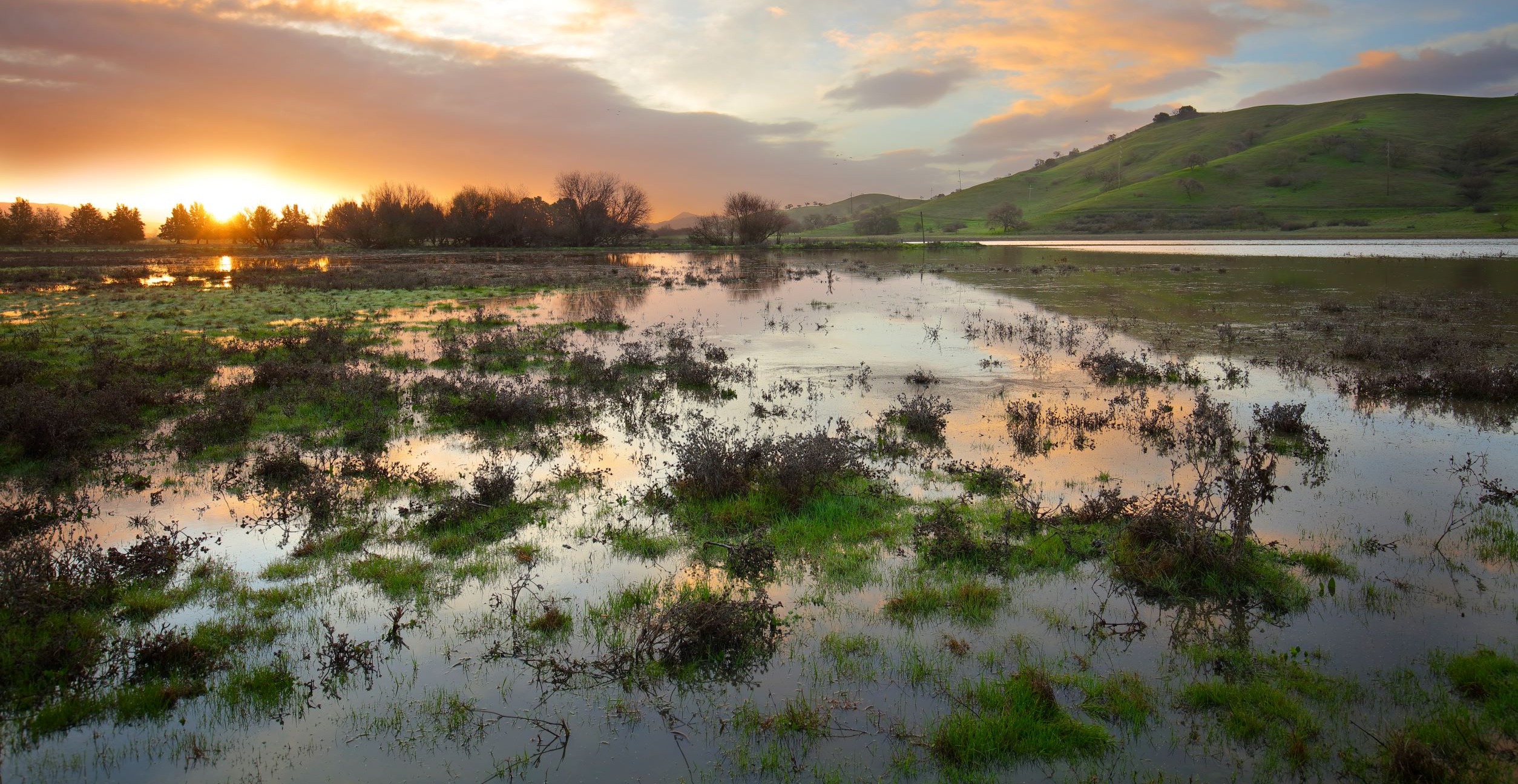The first few weeks of 2023 brought a parade of Atmospheric River Storm events that ravaged California. Several feet of rain and powerful wind events caused widespread power outages, and many areas experienced intense flooding, fallen trees, and mudslides. Though the storms caused a fair amount of disruption across the region, Santa Clara Valley’s open spaces (our critical natural infrastructure) likely helped mitigate even further damage.
Keep reading to see the impact of the storms and how investing in the protection of nature allows nature to protect people and wildlife from the unwelcome effects of climate change.
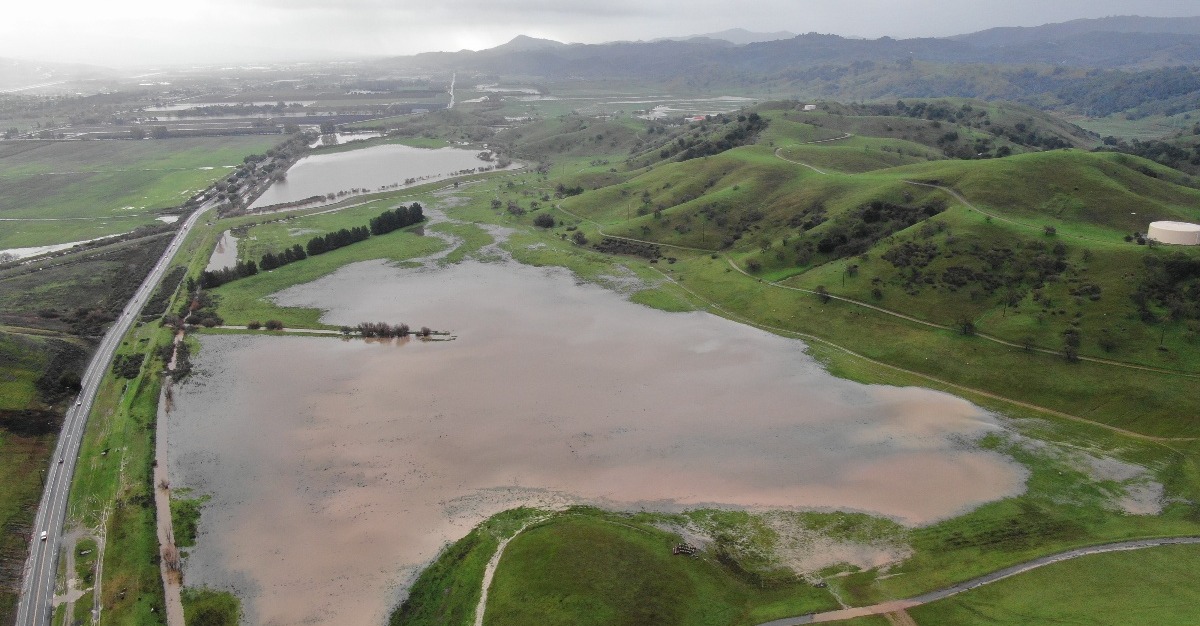
Flooded Laguna Seca wetland in North Coyote Valley (Derek Neumann)
Laguna Seca, nestled within Coyote Valley, is the largest remaining freshwater wetland in San José. Wetlands are unique ecosystems where water covers the surface of the soil either permanently or seasonally, while supporting aquatic plants and other life. Not only do wetlands help filter our drinking water – they also serve as a buffer that prevents rivers and creeks from flooding (as pictured above).
In 1916, Laguna Seca was completely transformed and repurposed for agricultural use, disrupting the marshland ecology of the basin, along with the species that called this wetland home. As a result, the wetland remains dry most of the year. But in 2019, the Open Space Authority, the City of San José, and the Peninsula Open Space Trust (POST), invested $93.5 million to permanently protect and restore this important asset.
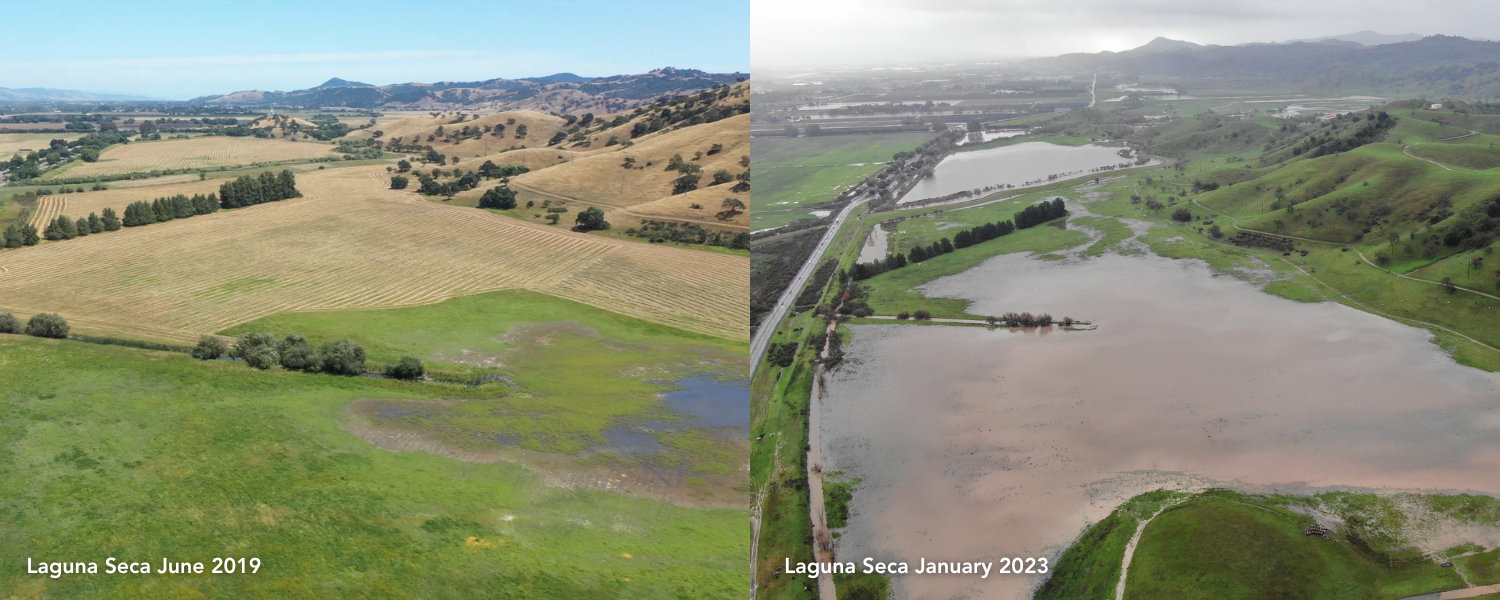
Laguna Seca when dry (June 2019) and wet (January 2023)
A floodplain is a generally flat area of land next to a river or stream, in this case stretching from the banks of the river to the outer edges of the valley. The Coyote Valley floodplain (pictured above) acts as a sponge for recharging groundwater and slowing floodwaters; and supports the creeks, streams, and woodlands that help provide clean air and clean water to surrounding communities. Coyote Valley contains half of Silicon Valley’s undeveloped aquifer recharge area, making it a critical factor in supporting the region’s water security in the years to come.
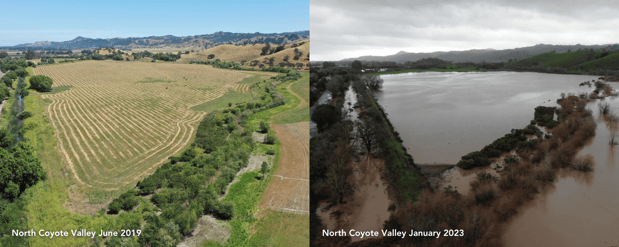
North Coyote Valley when dry (June 2019) and wet (January 2023)
In partnership with the City of San José and Peninsula Open Space Trust, the Open Space Authority has preserved over 1,550 acres of critical floodplain in Coyote Valley. Protecting natural and working lands allows these landscapes to do what they are naturally designed to do - capture, spread, and sink stormwater. This not only provides flood risk reduction for nearby communities, but also helps recharge the aquifer that supplies us with essential drinking water. During the Atmospheric River Storm events, these lands helped capture hundreds of thousands of gallons of water, which if developed, could have created even more run-off, leading to more flooding.
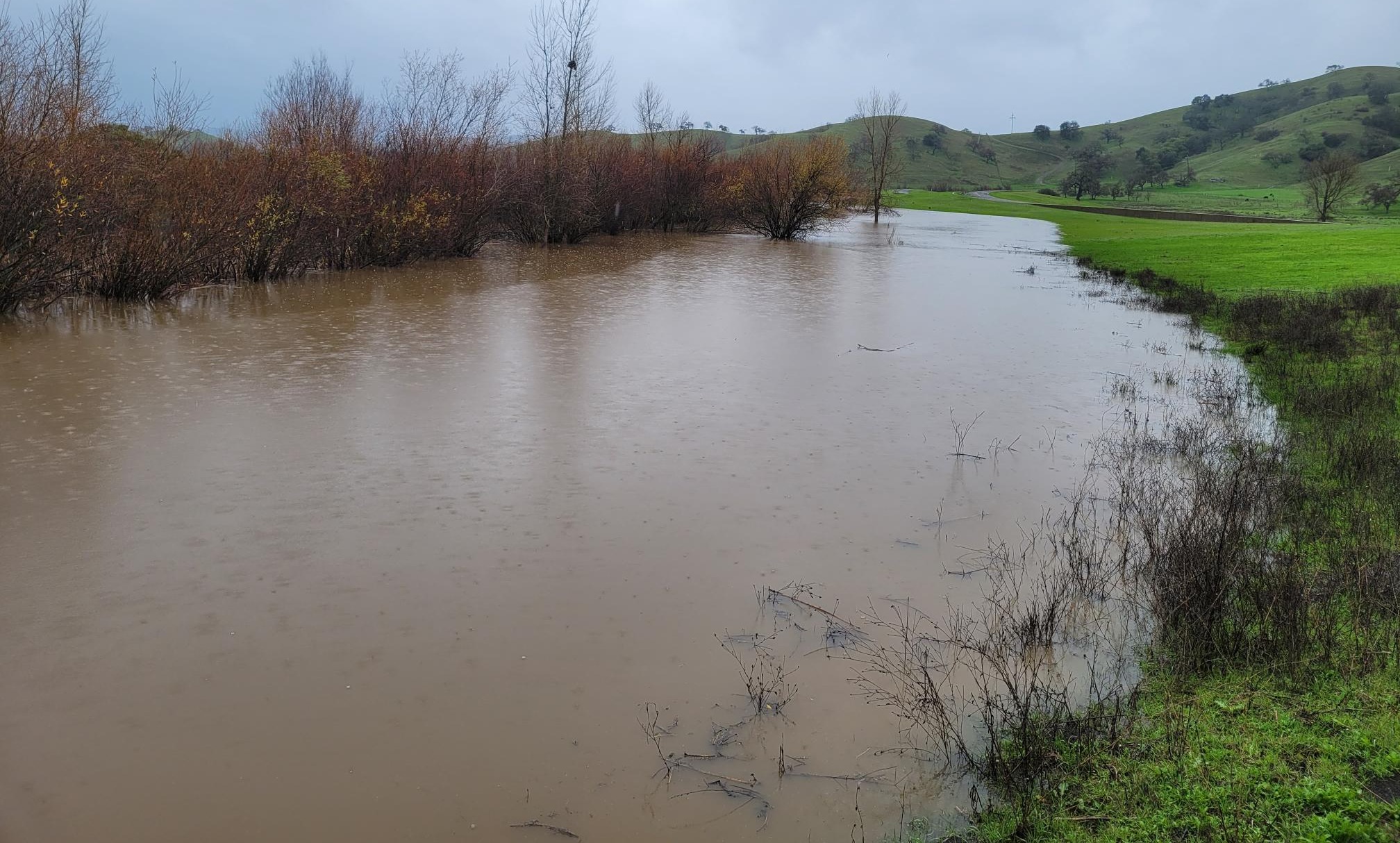
Flooded Fisher Creek (Megan Robinson)
Fisher Creek, which flows into Laguna Seca, is a riparian habitat that supports biodiversity in mid Coyote Valley. As a focal point for habitat restoration, the Open Space Authority facilitates planting days to support the vast array of wildlife that use Coyote Valley as a critical connection between the Santa Cruz Mountains and Diablo Foothills. With high diversity of plant life along this riparian corridor, Fisher Creek can capture more water, slowing and spreading flow to promote groundwater recharge and reduce flooding.
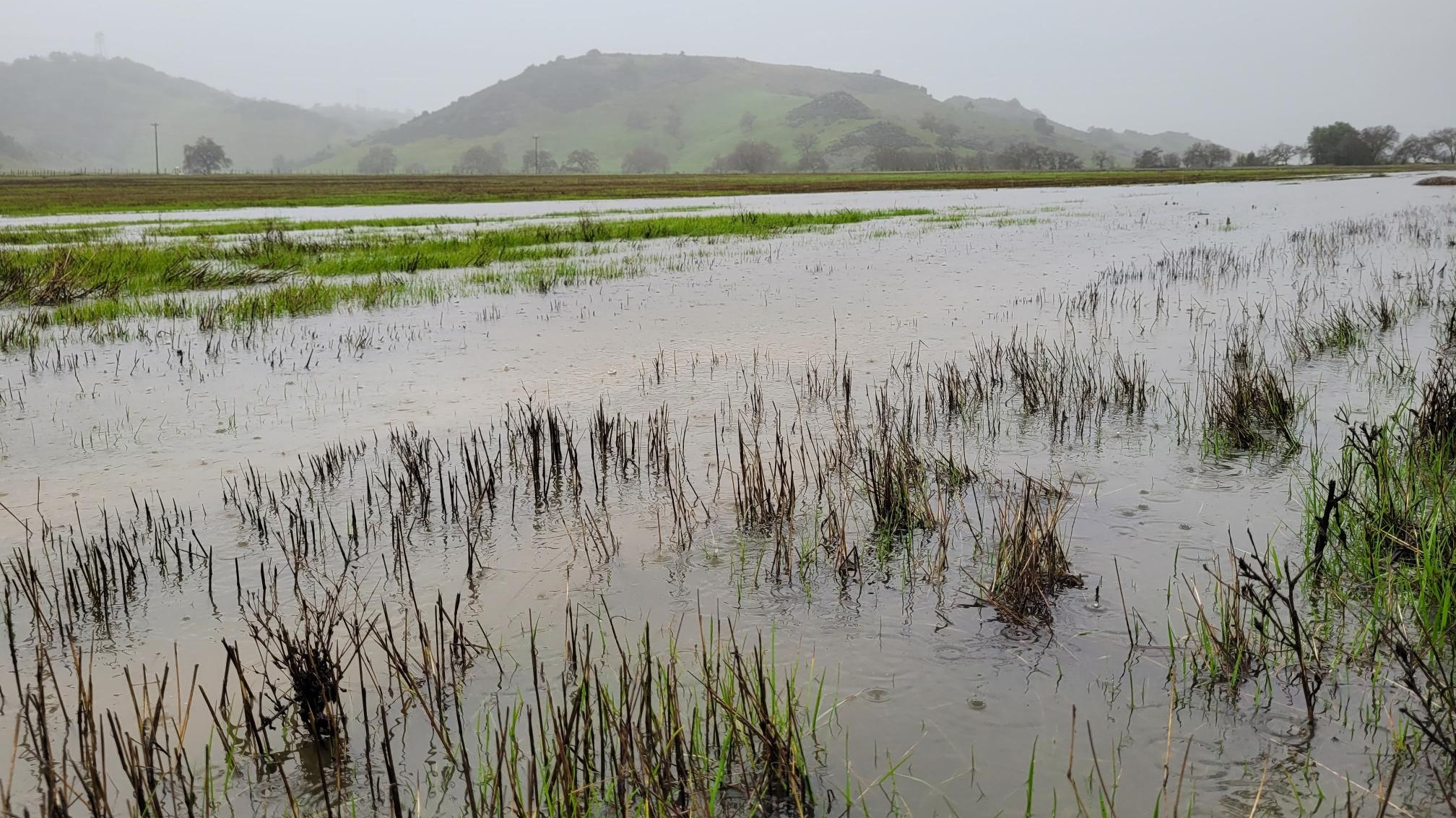
Flooded farmland in Coyote Valley
Open Space Authority farmland properties in south Coyote Valley exemplify some of the benefits of sustainable agriculture. Sustainable farmlands with healthy soils can act as sponges during rain events, capturing water, letting it flow into the aquifer, and in the process preventing additional flooding in areas downstream.
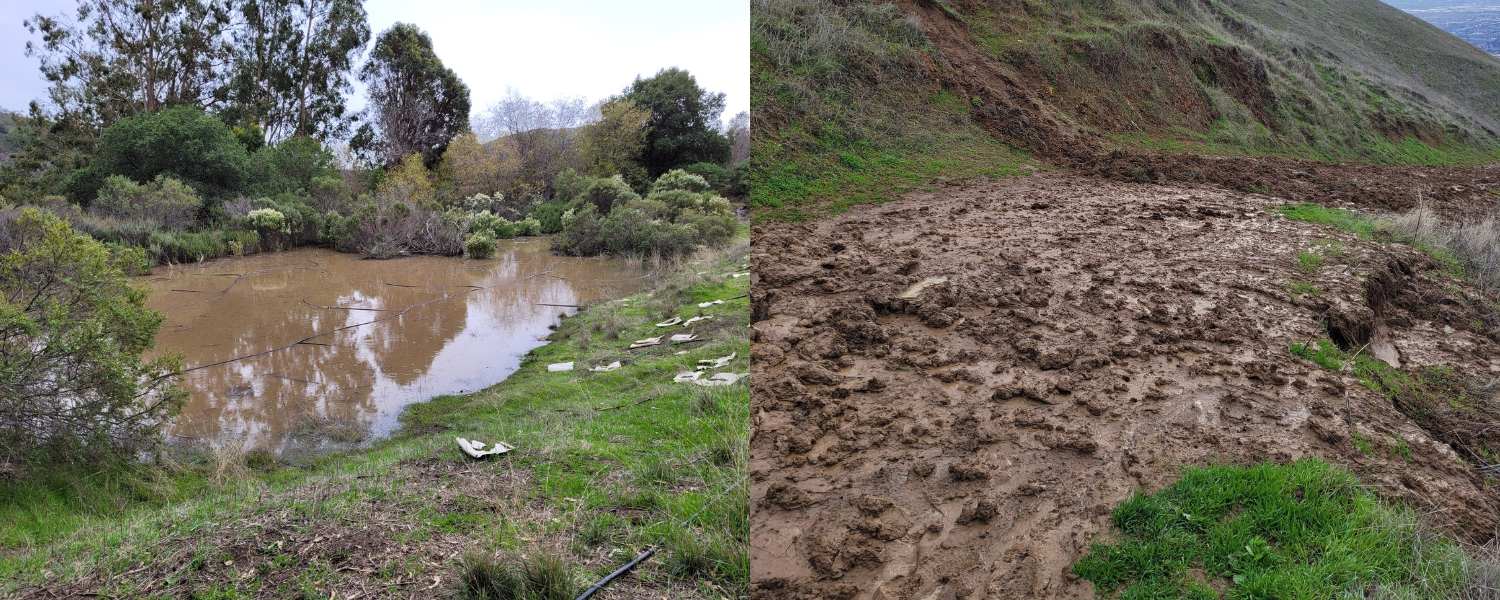
Flooding and muddy trails at Sierra Vista Open Space Preserve
All open spaces throughout the Santa Clara Valley serve this critical purpose, including Sierra Vista Open Space Preserve (pictured above). Open spaces with healthy soils and biodiverse plant life absorb much of the rain that would otherwise contribute to flooding and in the process, the ground can become very muddy.
During this time, open space preserves closed due to dangerous winds, muddy conditions, and risk of landslide, while Field Staff continued to monitor conditions. As conditions improved, trails began to reopen with modifications in place, such as only allowing hiking until trails fully dried for the safety of visitors. As visitors began coming back to their open spaces, Field Staff reminded everyone to come prepared, stay safe, and respect the land, the wildlife, and each other.
Before visiting the Open Space Authority reserves, we encourage you to prepare and visit our Conditions and Guidelines webpage.
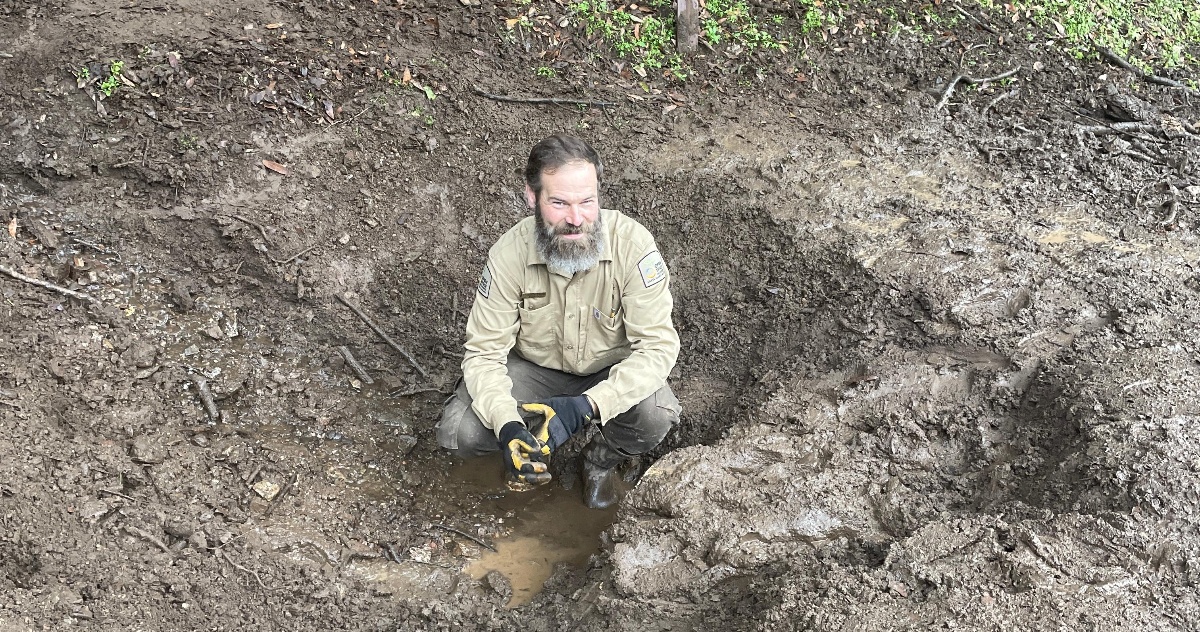
Open Space Technician Patrick sits in a recently cleared culvert at Sierra Vista Open Space Preserve
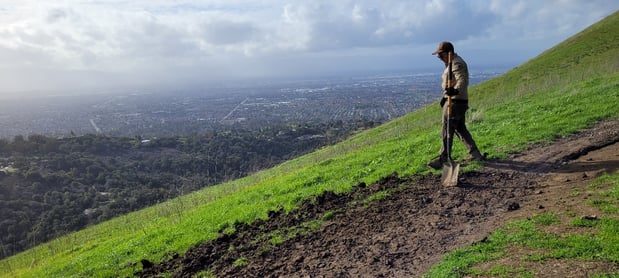
Open Space Aide Abel repairs a muddy trail at Sierra Vista Open Space Preserve
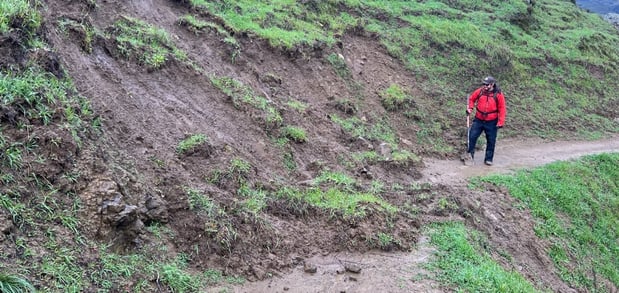
Open Space Technician Stephen works on clearing a mudslide at Sierra Vista Open Space Preserve
While most in the region were home during the storms, Open Space Authority Field Staff were hard at work assessing impact and keeping an eye out for visitors. And after the storms finally passed, they started working to repair some of the damage.
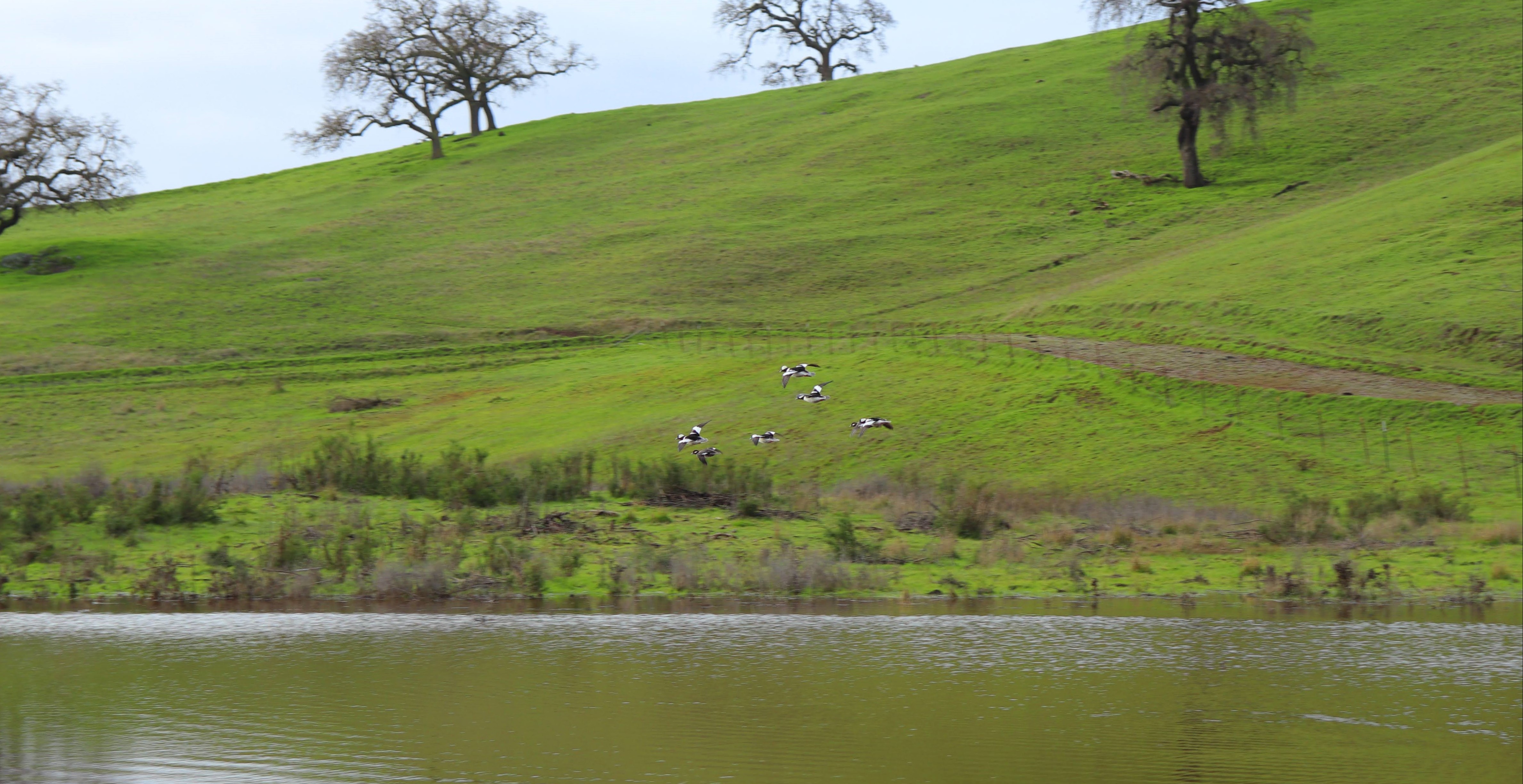
Bufflehead ducks enjoy the rainy conditions in a flooded Laguna Seca (Kat Hill)
As the climate continues to change, storms like this can become more frequent and more severe, making it even more critical to invest in the protection of nature. The Open Space Authority continues protecting and restoring Santa Clara Valley’s natural and working lands, so nature can care for everyone. Learn more about the Open Space Authority’s restoration work here.
